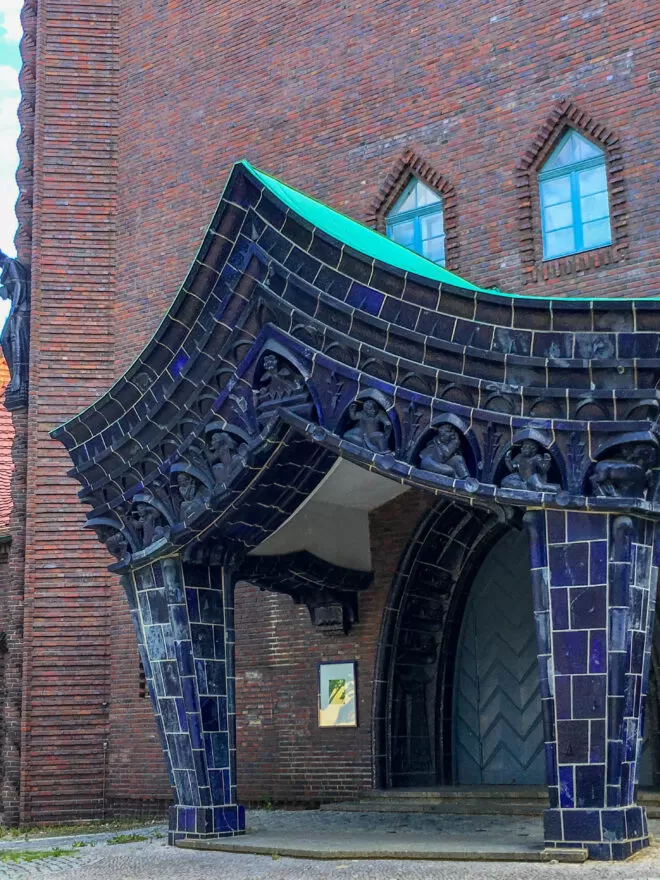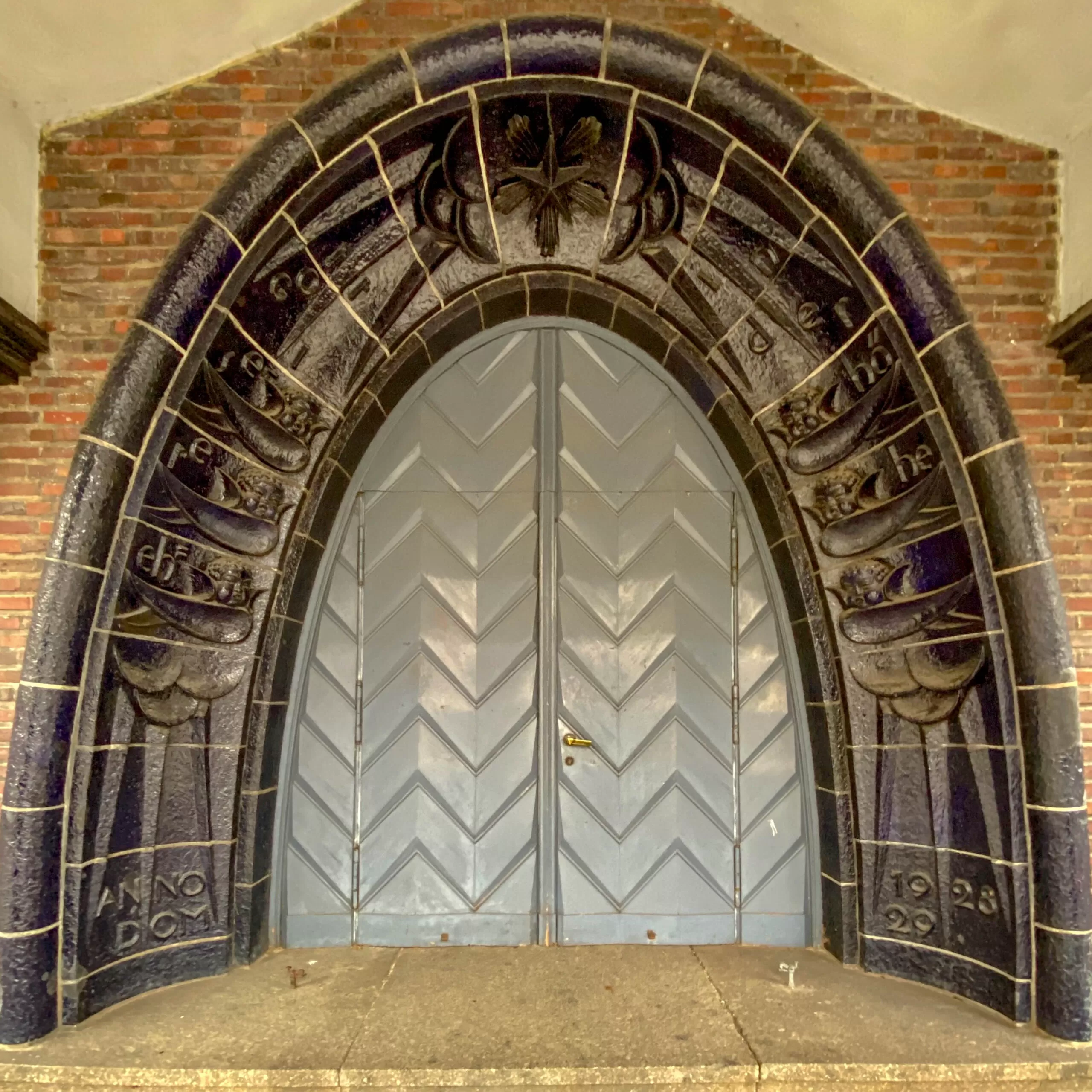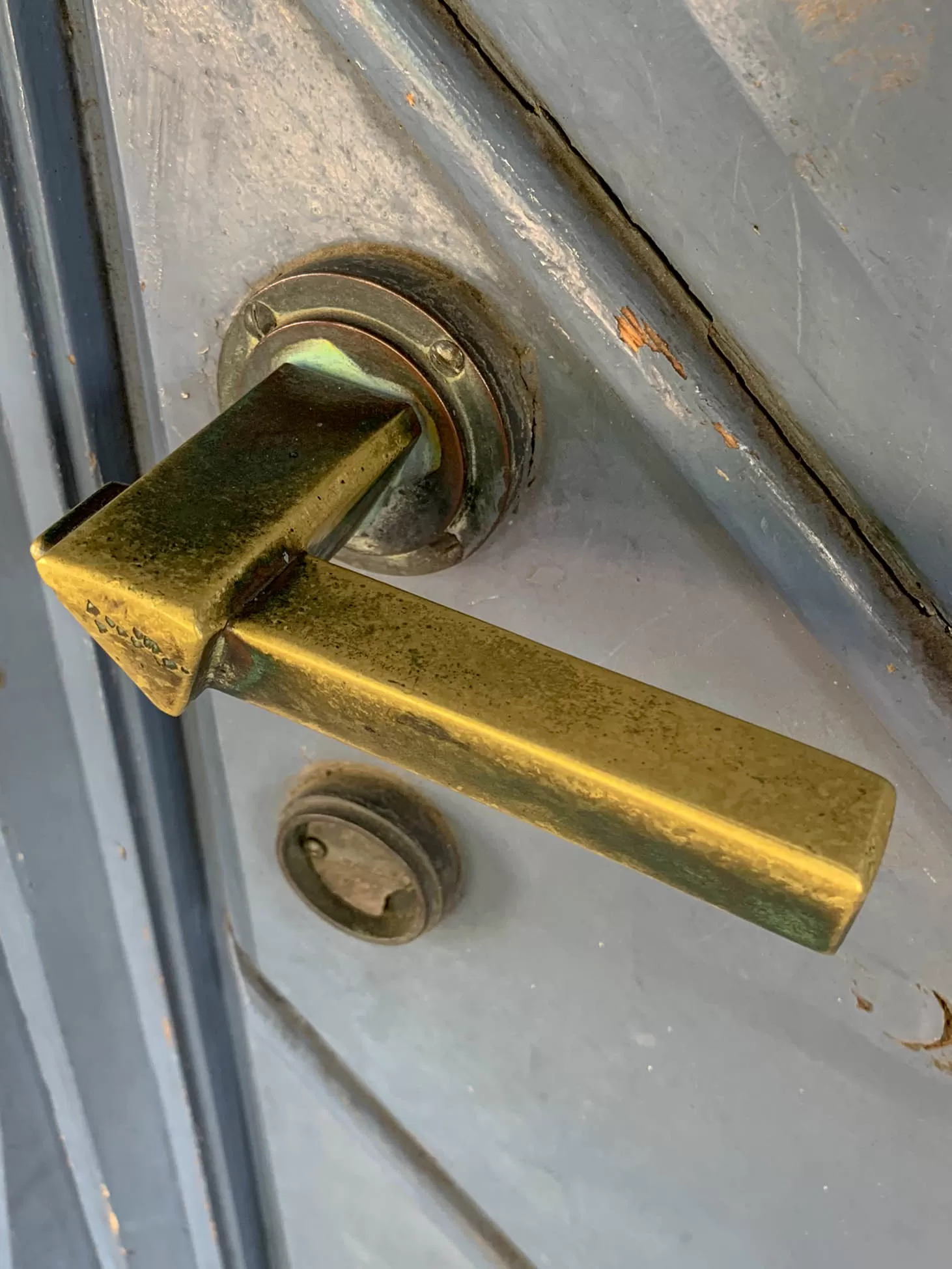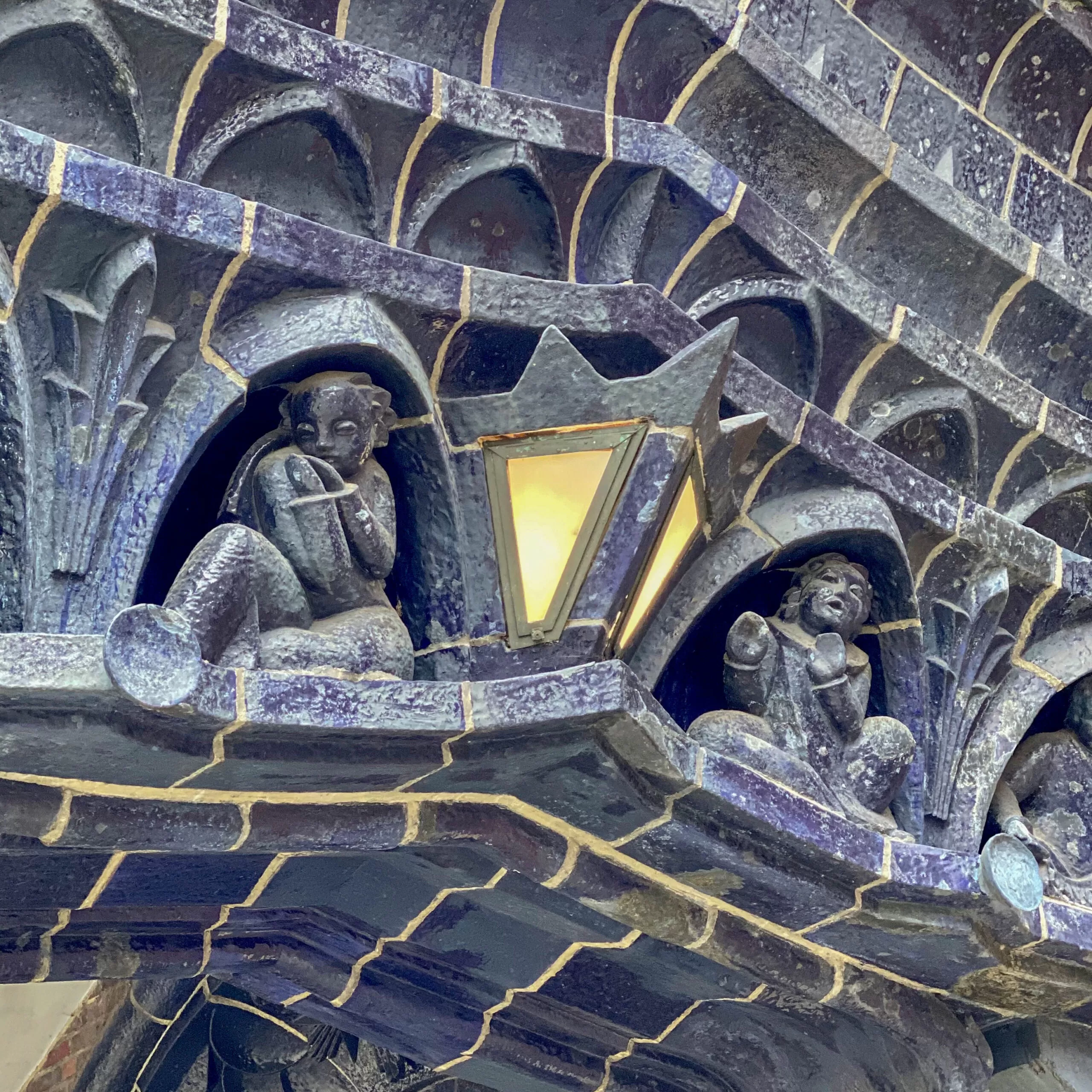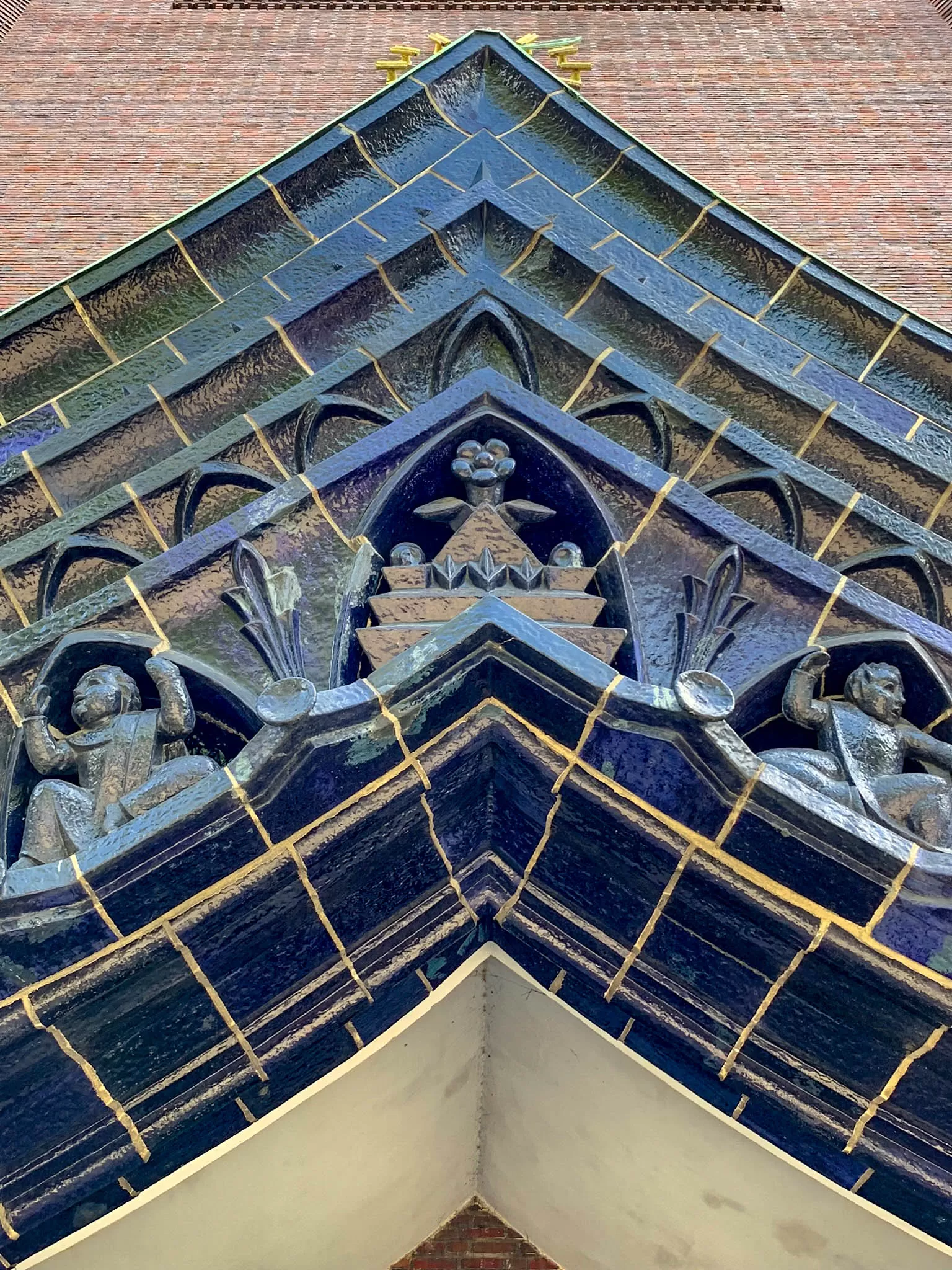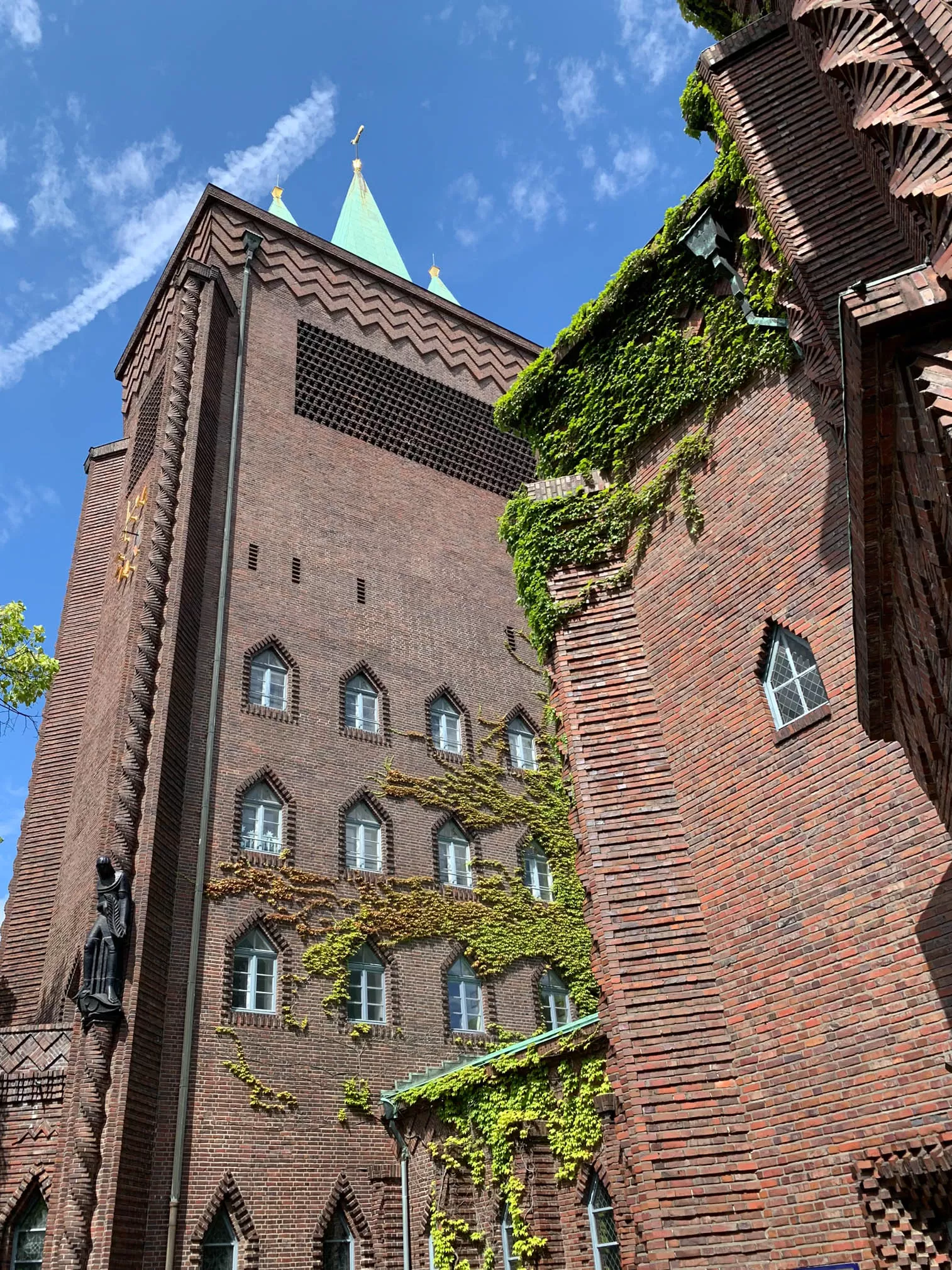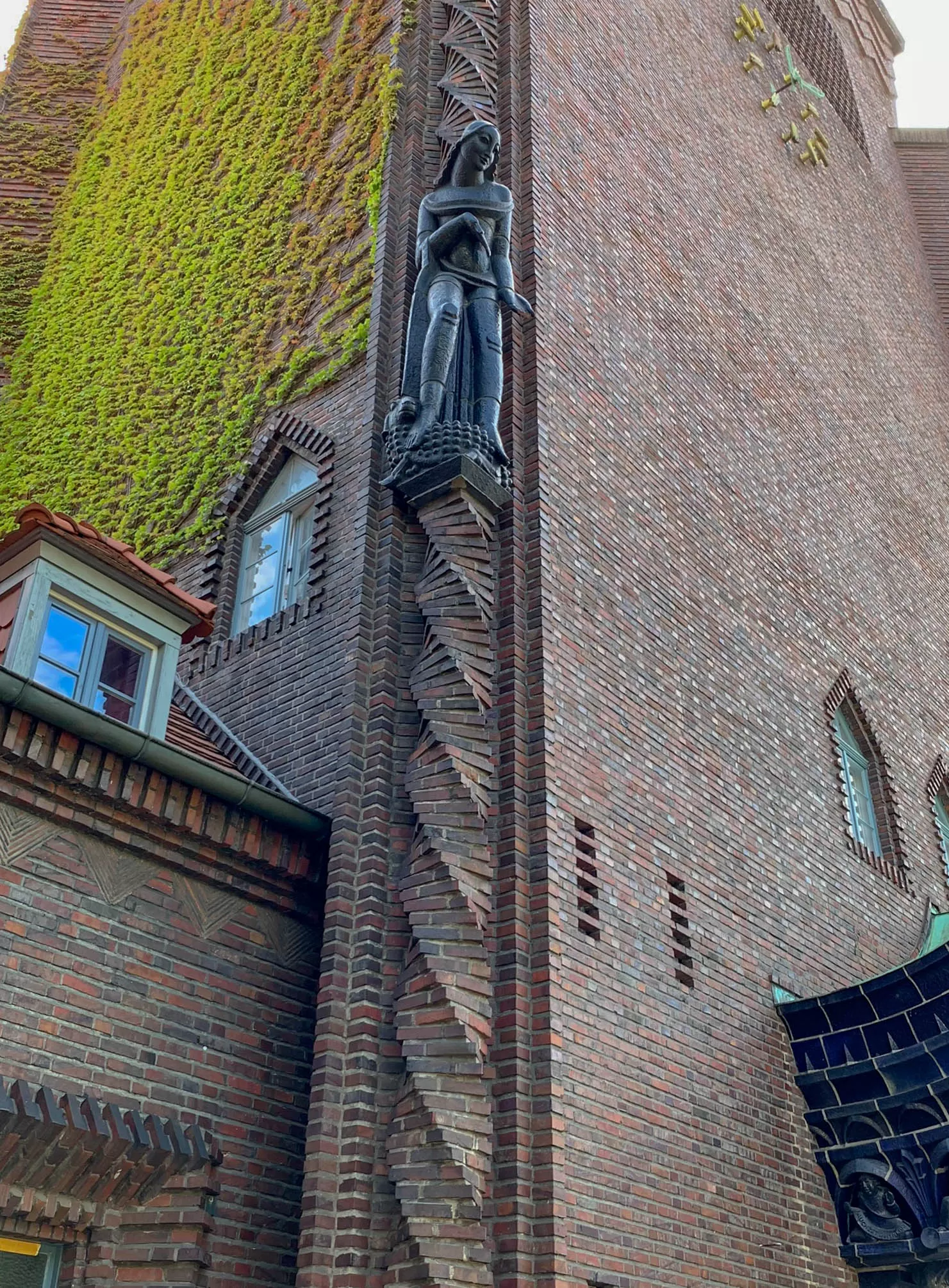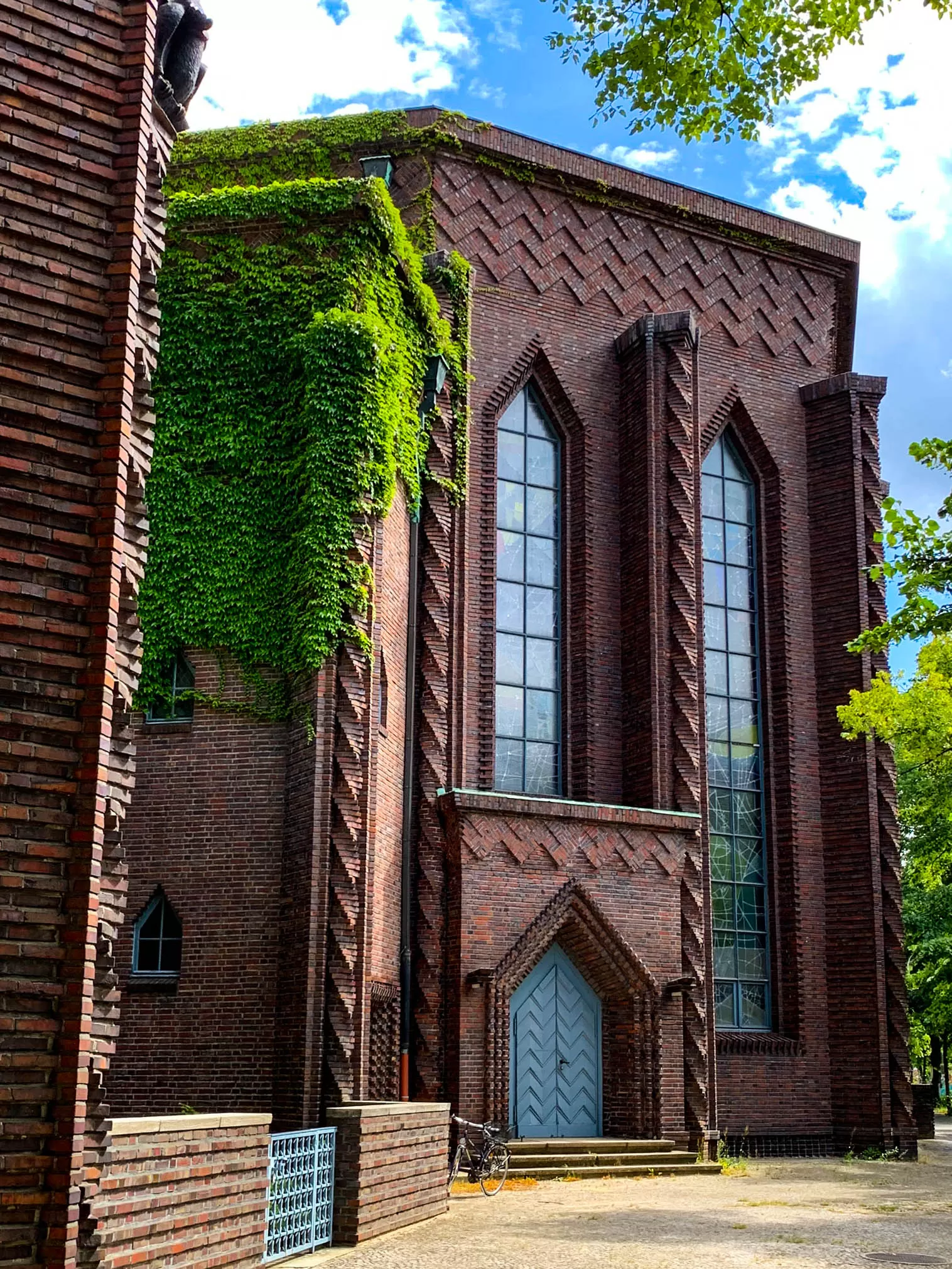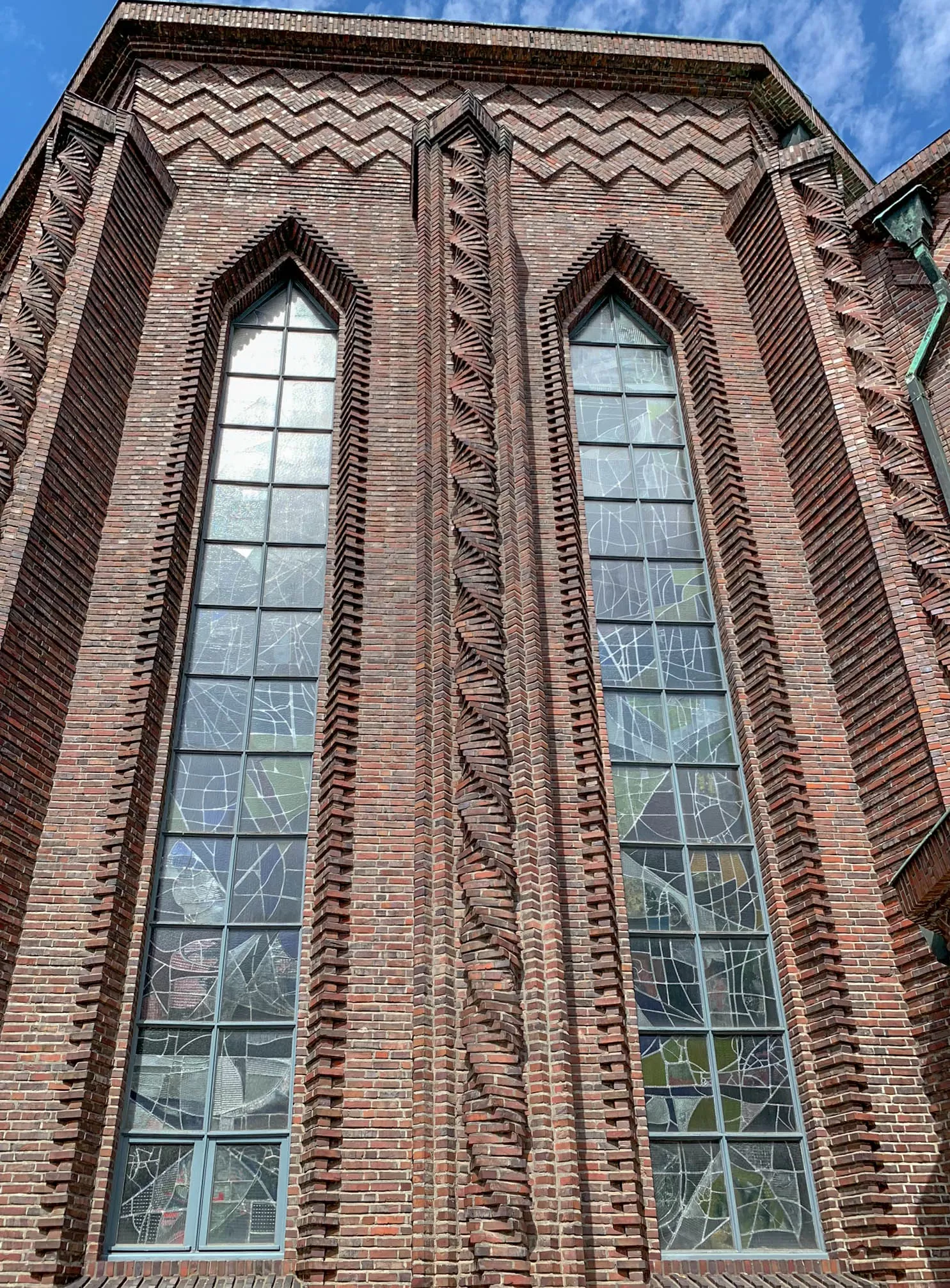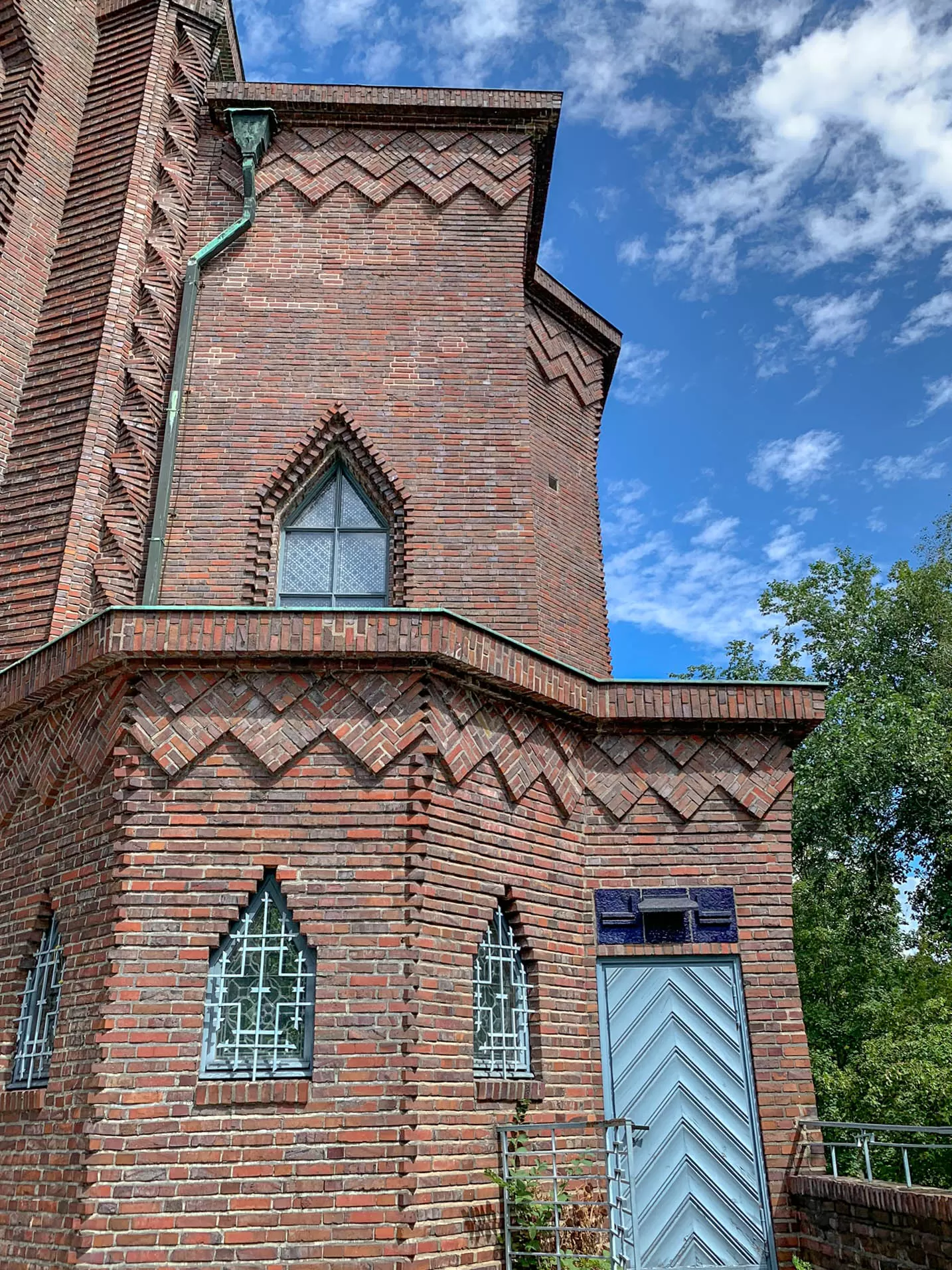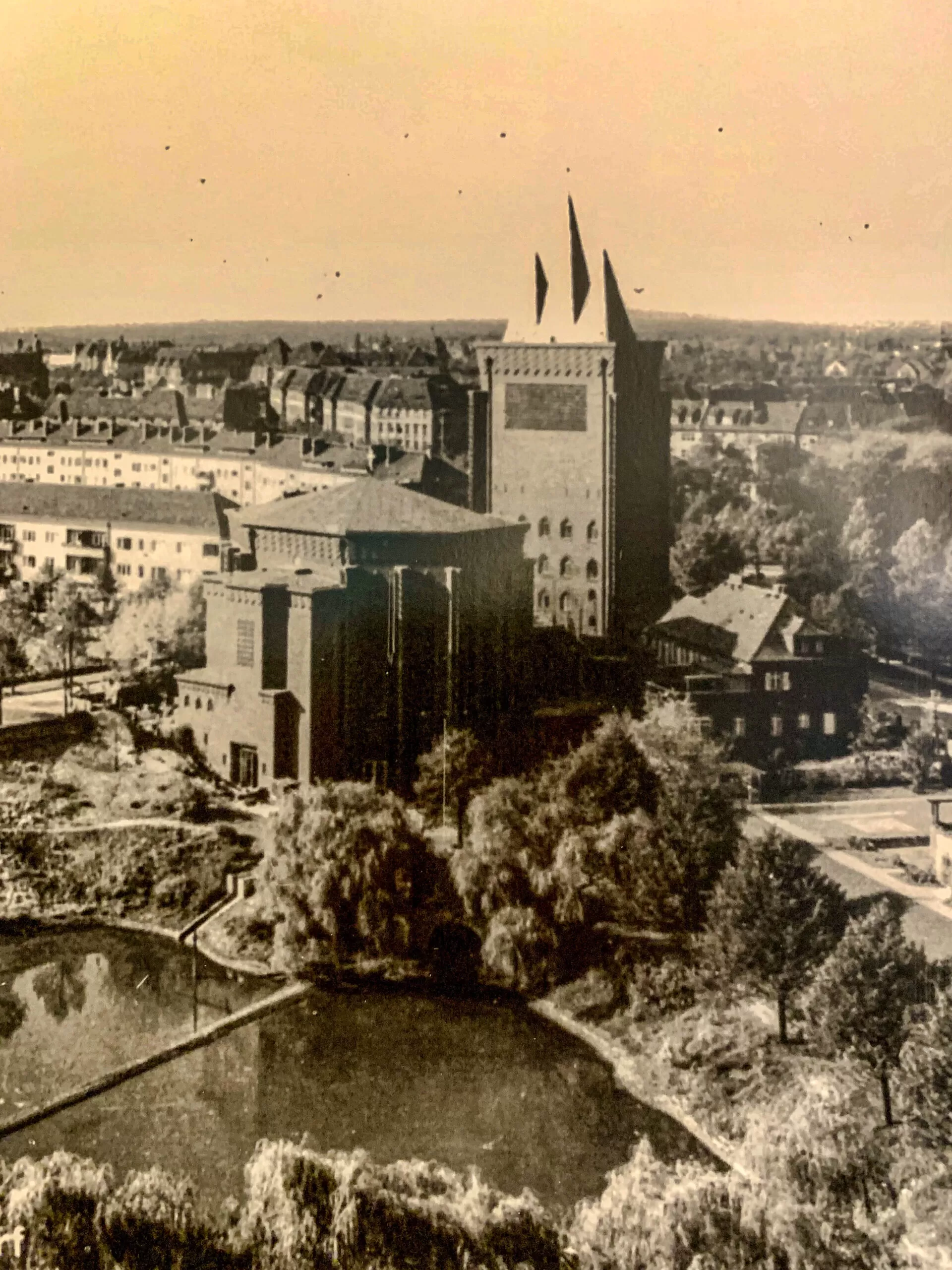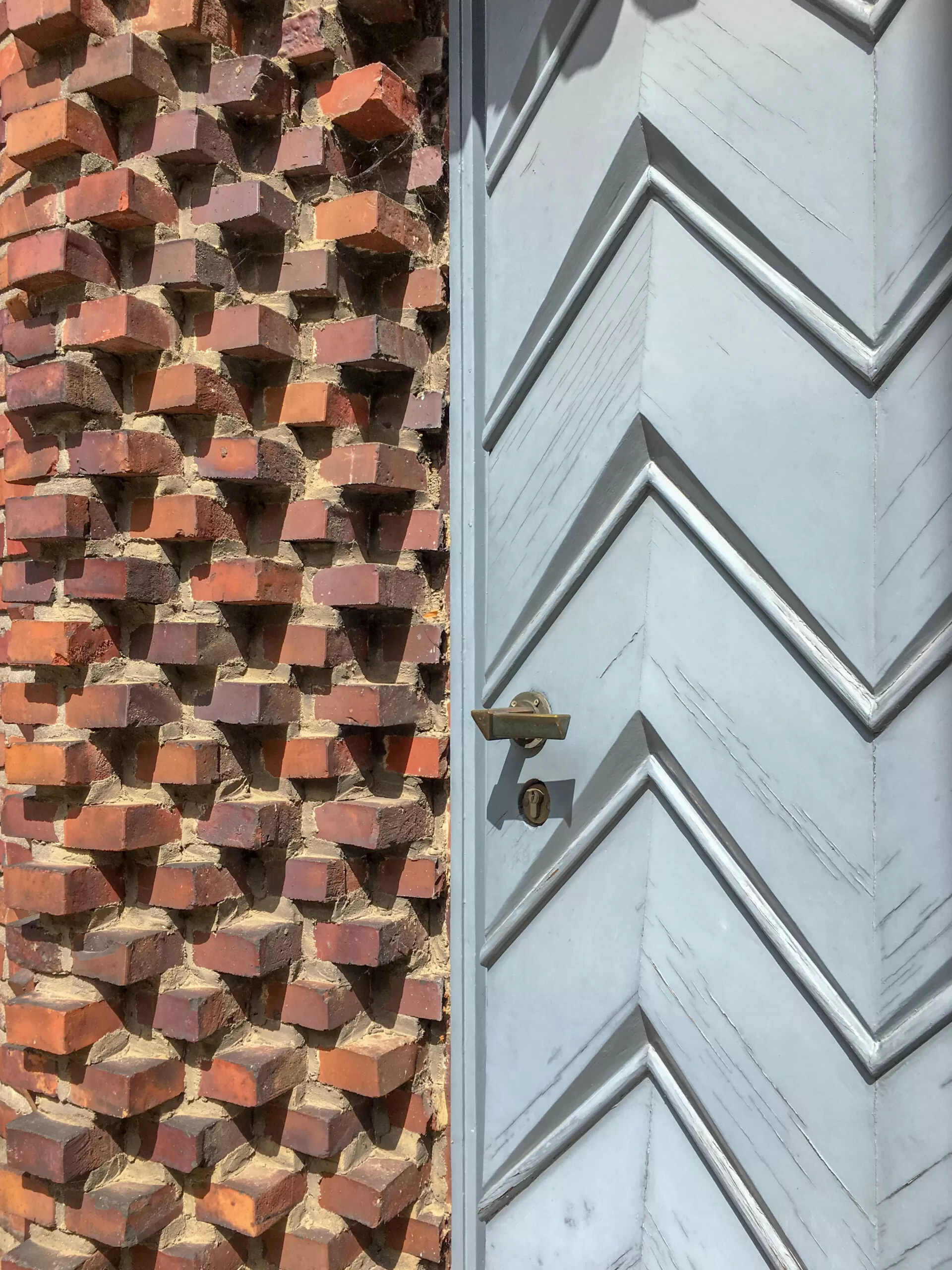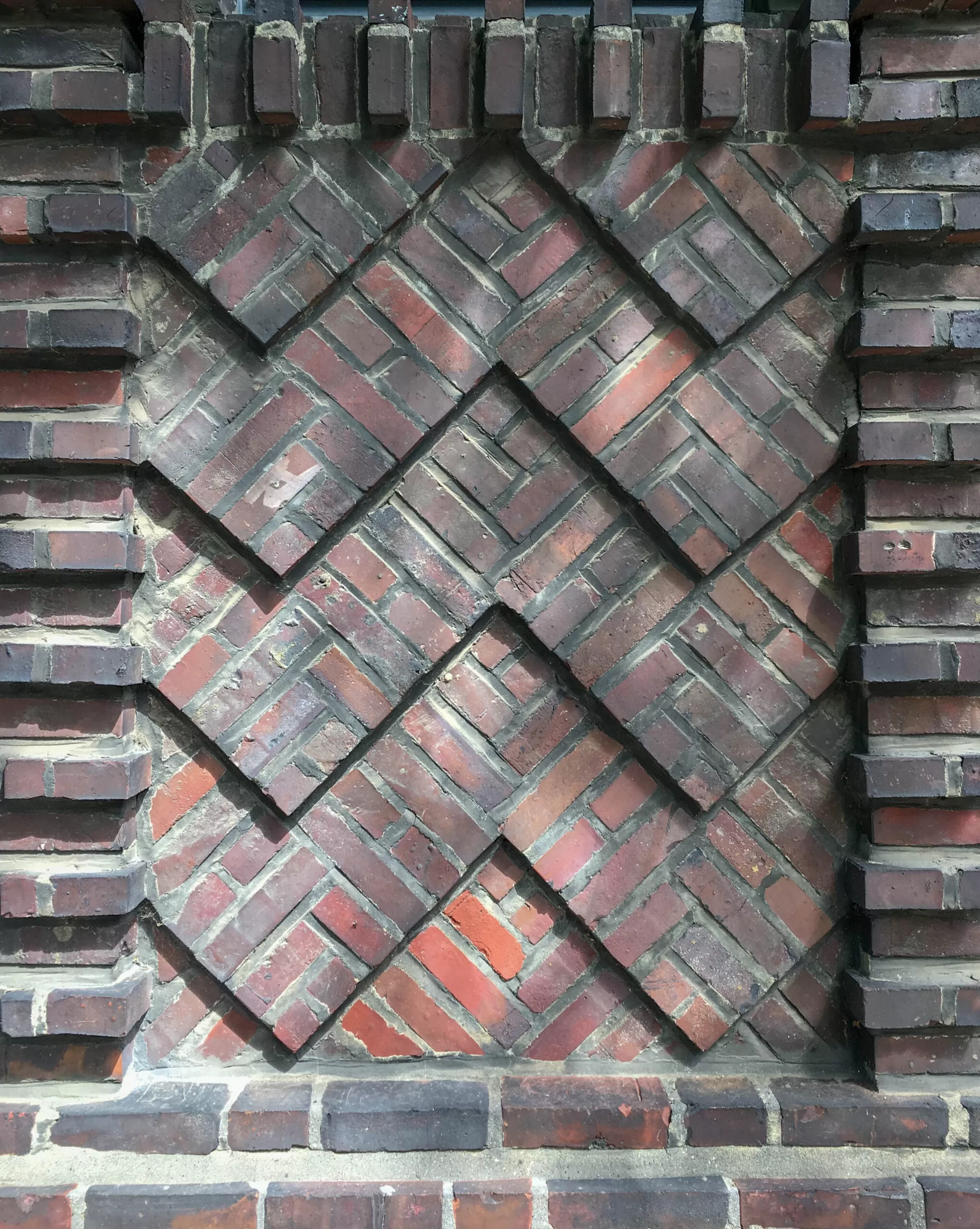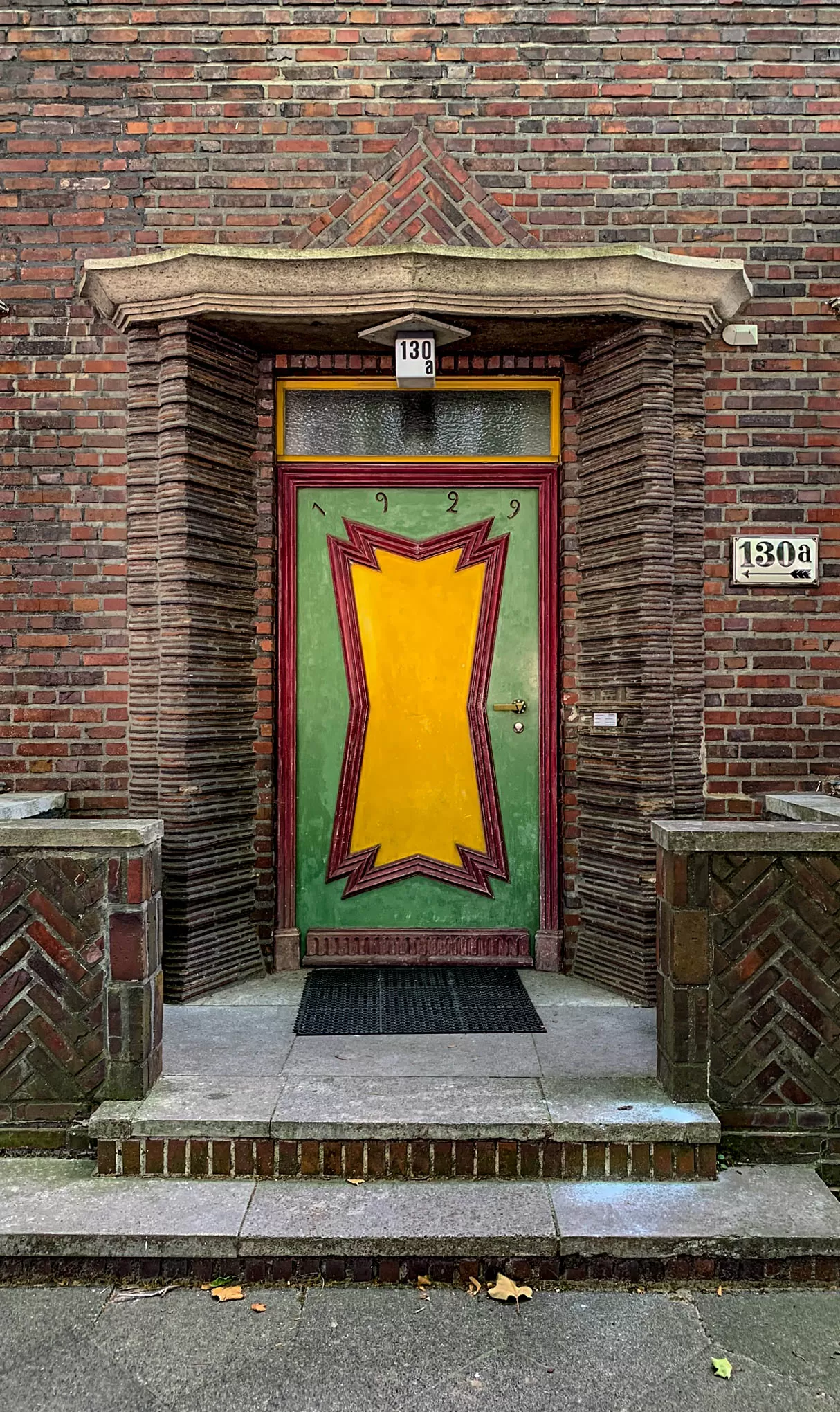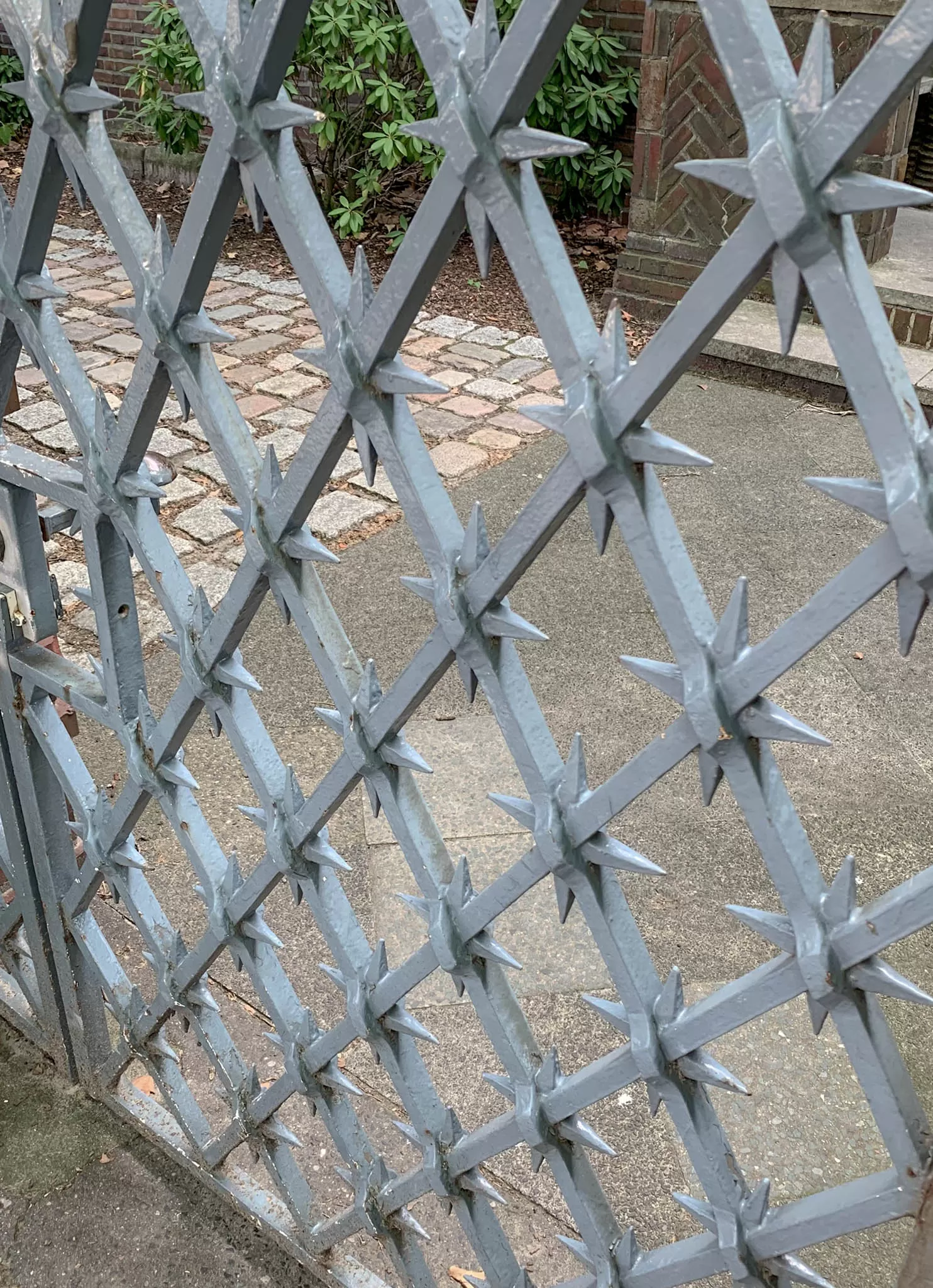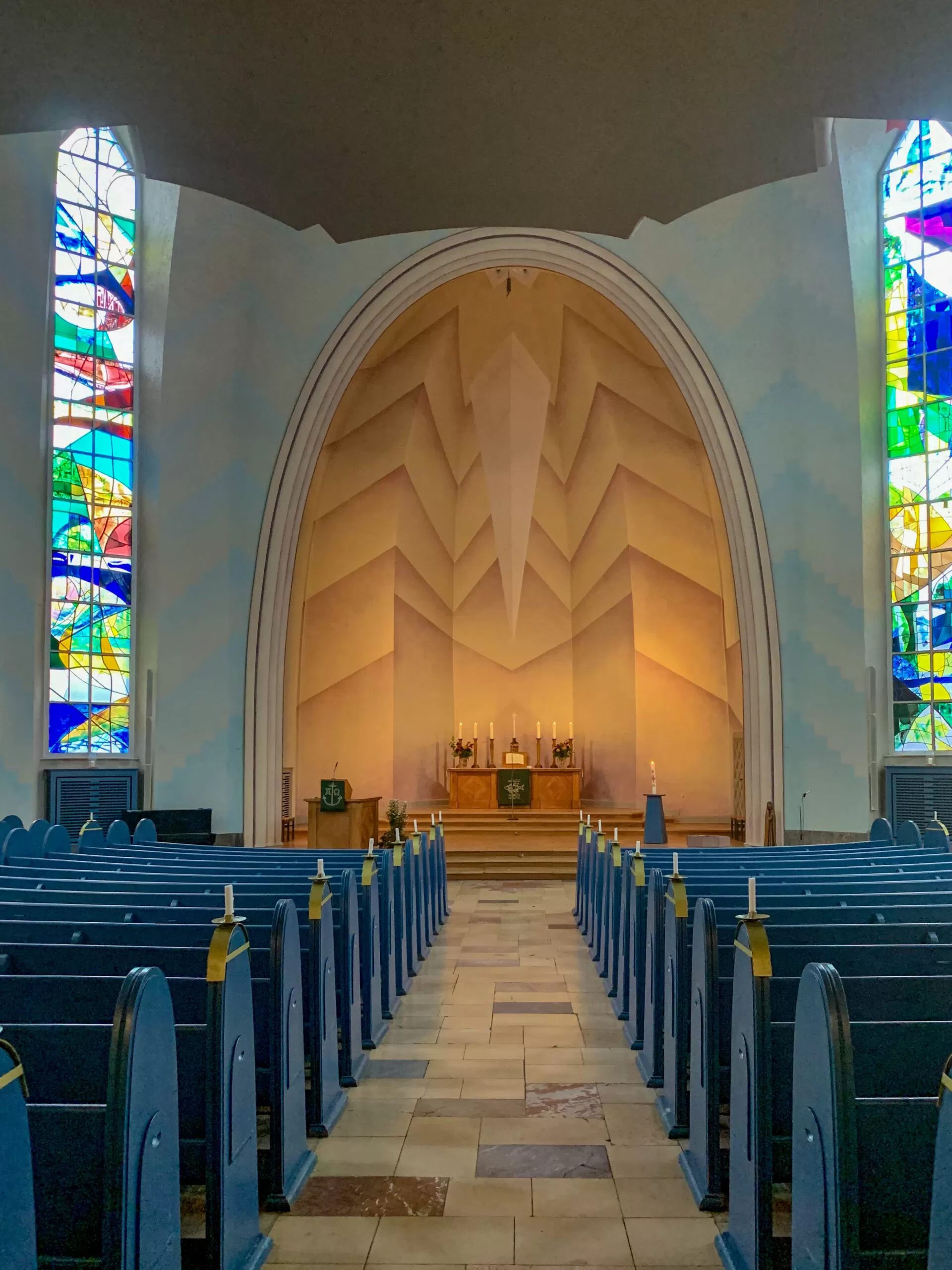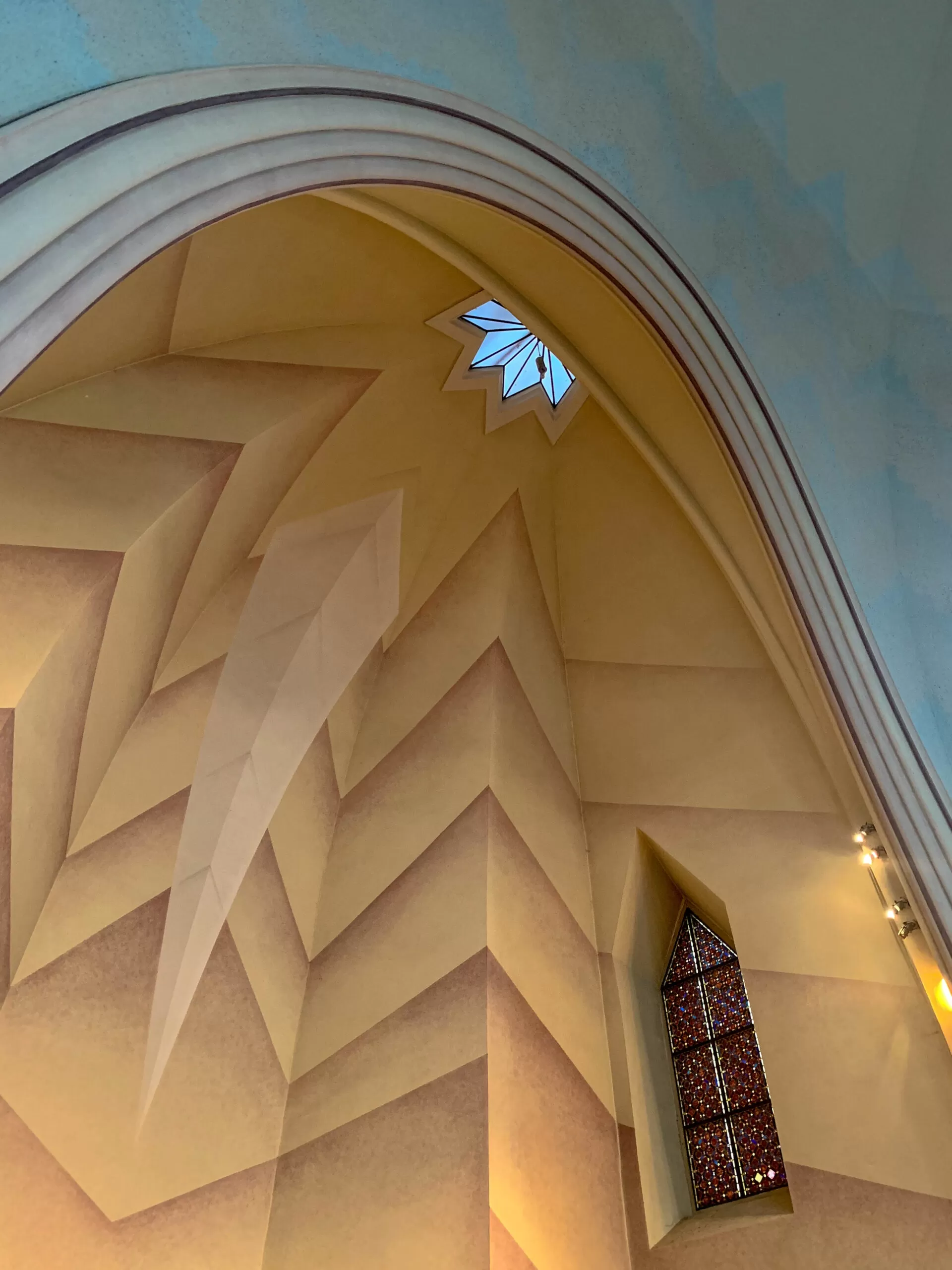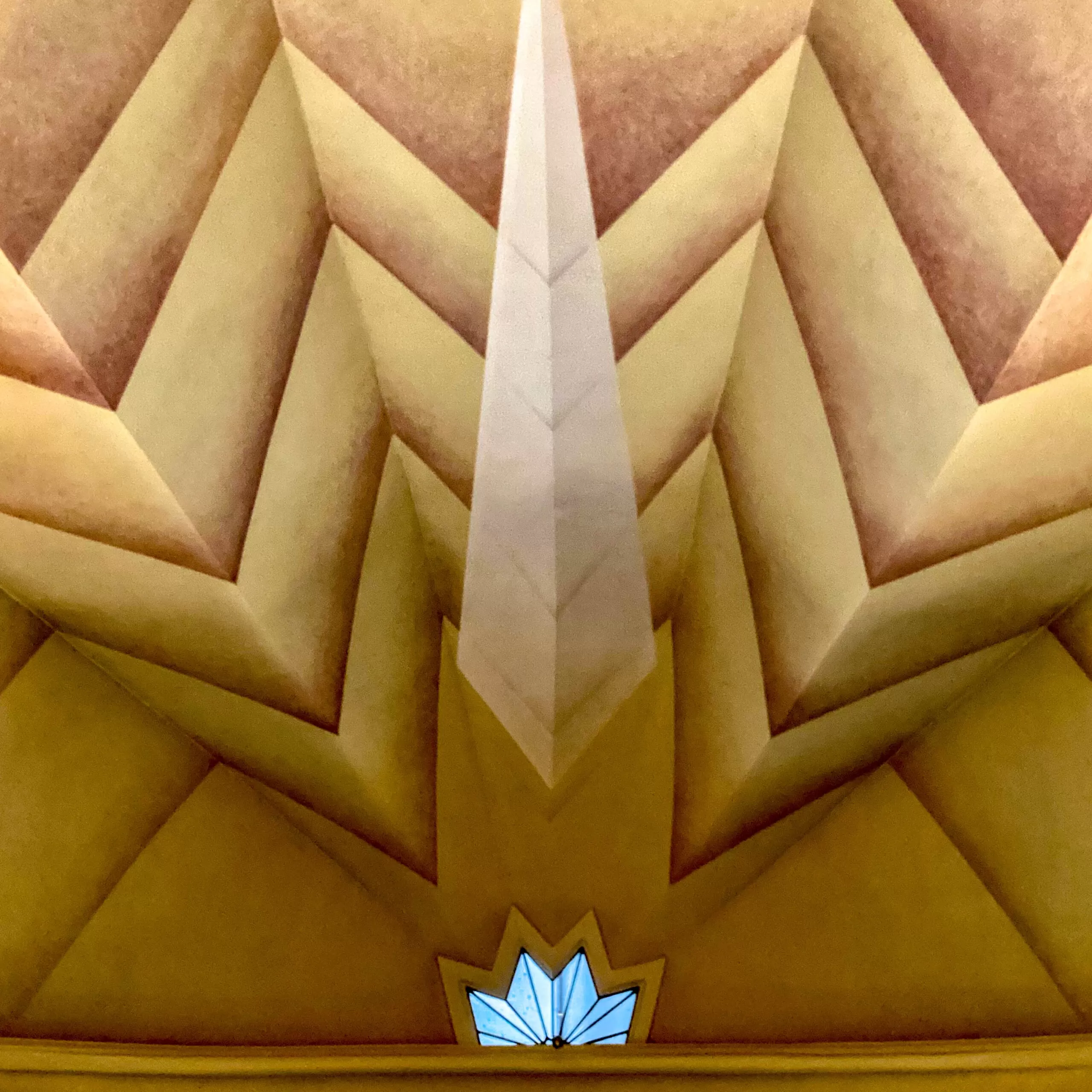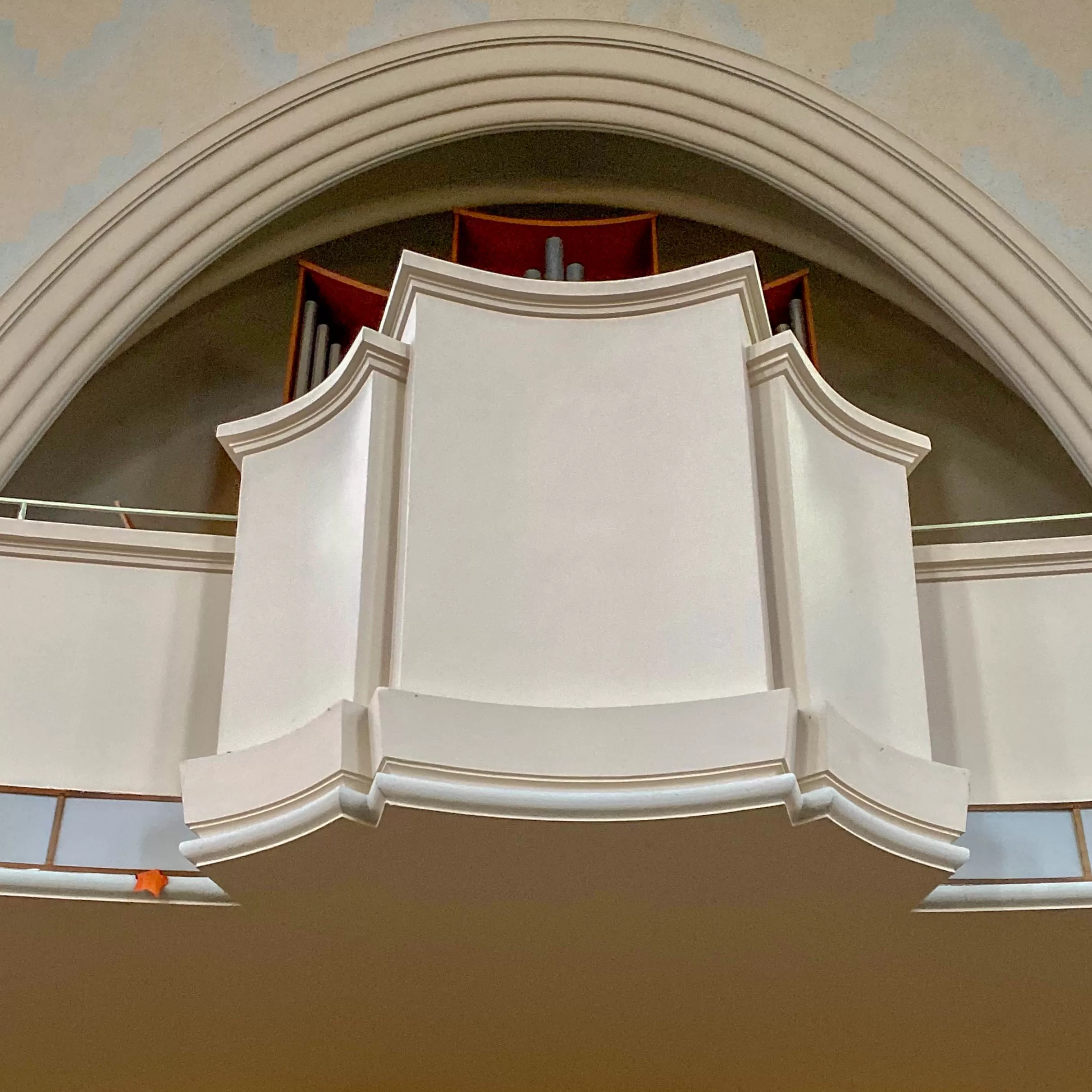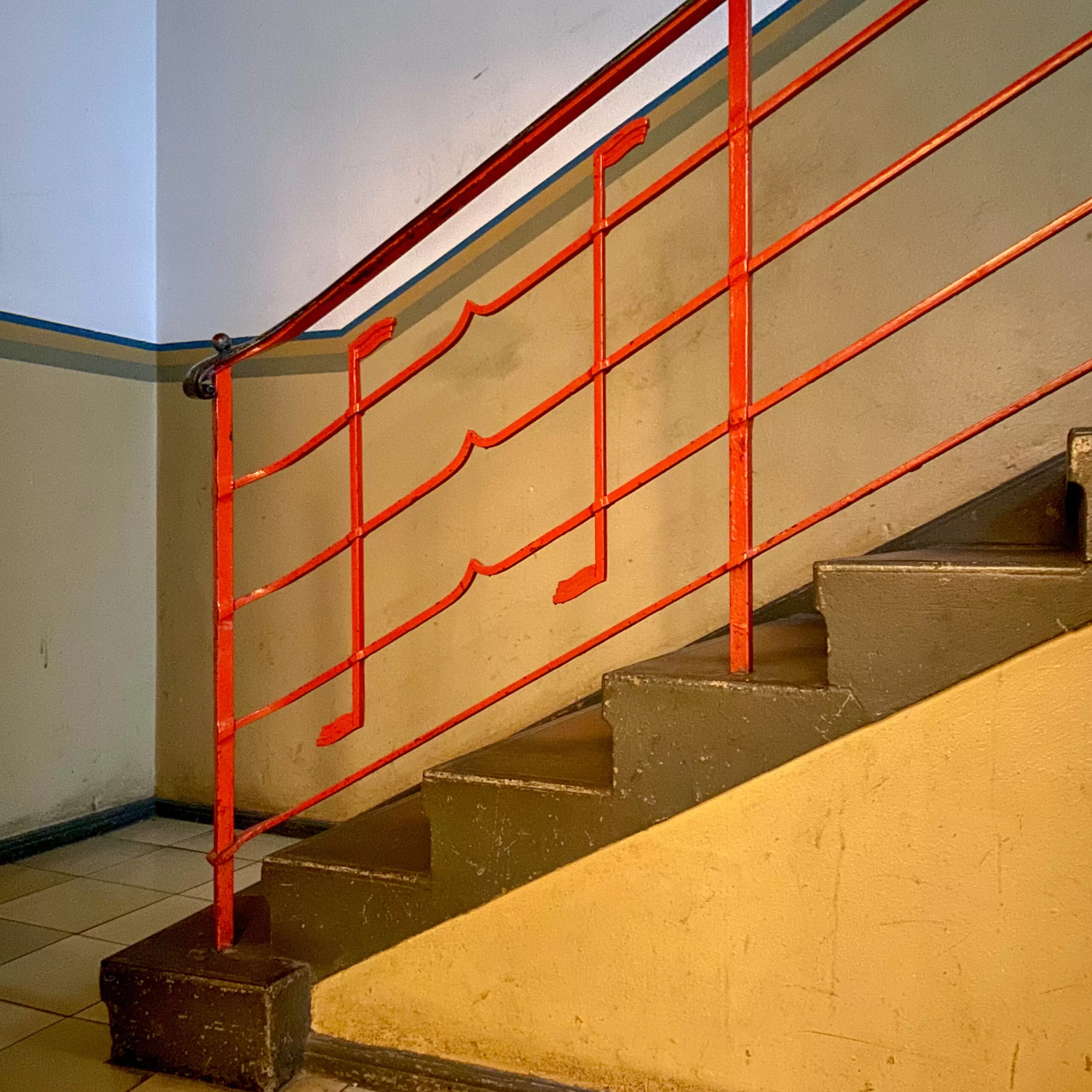1927 – 1929
Architects: Ernst and Günther Paulus
Hohenzollerndamm 130, Berlin, Germany
The listed Protestant Church of the Holy Cross at Hohemzollerndamm in the Berlin district of Schmargendorf was built together with the adjacent parsonage between 1927 and 1929 according to the plans of the architects Ernst Paulus and Günther Paulus.
Architects
Ernst Paulus was initially an employee of the architectural firm of Hans Grisebach and August Dinklage in Berlin.
When Grisebach left in 1901, Dinklage made Ernst Paulus his new partner, and the office was now called Dinklage and Paulus.
In 1910, Dinklage in turn left this office, Paulus continued it with Olaf Lilloe as a new partner.
In 1925 he ended the cooperation with Lilloe and founded an office together with his son Günther Paulus.
This partnership continued until Ernst Paulus’ death in 1936.
As early as 1911, Ernst Paulus had won the competition for the Schmargendorf church.
Kreuzkirche
Construction was to have begun in 1916, but work was halted due to labor shortages during the First World War.
It was not until December 1927 that the foundation stone could be laid for a building that had been redesigned in the meantime and was based on the architectural style of brick expressionism.
The clinker-clad complex consists of three buildings lined up next to each other, which are opened up in the west by a blue-glazed pagoda porch designed by the sculptor Felix Kupsch.
The bell tower is adjoined on one side by the rectory and the sexton’s office, and on the other side by a cloister connecting the tower with the domed church.
Striking features of the facade are the zigzag friezes and spiral bars of Oldenburg clinker.
Interior
The octagonal interior is painted with a zigzag pattern that largely corresponds to the original wall painting.
Originally, it was executed in stronger colors according to a design by Erich Wolde. The blue of the pews is the only remaining original color.

